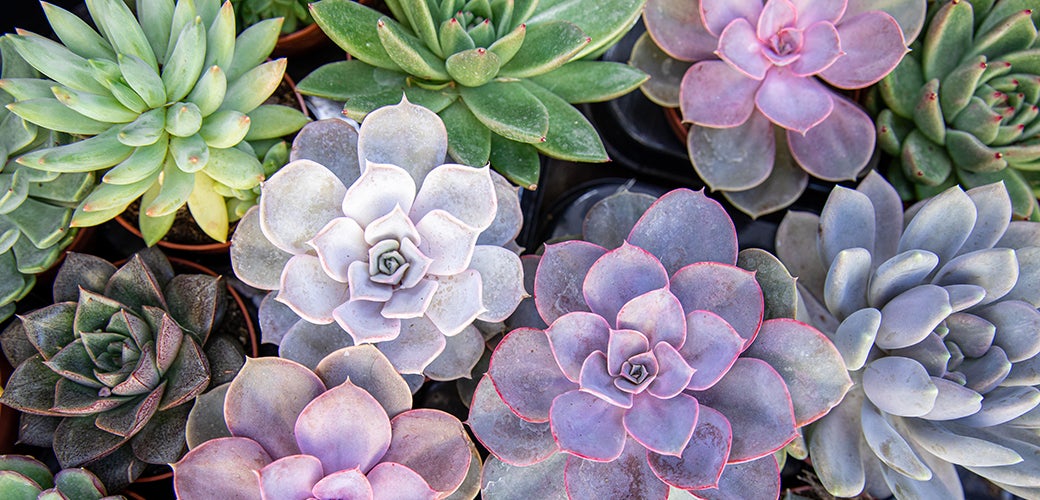

With many people spending more time at home, interest in adding some greenery to indoor spaces has only skyrocketed. And why not? Plants provide numerous benefits, from adding some visual interest, to helping with mental health and some even clean the air. For those with pets at home, having plants may be a little more challenging, particularly if your furry friend thinks that a new plant may be tasty.
Many people enjoy succulents for their easy care, pretty aesthetic and compact size. The wide variety of succulents available today allows people to have a vast array of different types of foliage at home to enjoy. However, more variety can also lead to some confusion over which plants are safe for your pets. The ASPCA Animal Poison Control Center (APCC) has a list of which popular succulents are toxic and which are safe, as well as tips to help keep your pets safe.
Non-Toxic Succulents
If your furry friend is keen on nibbling plants, or if you would prefer not to worry about your pet ingesting a plant, you may consider one of the below succulents. However, it is important to remember that “non-toxic” does not mean “no problem”. Some pets may develop mild stomach upset ingesting any type of plant, since it is not part of their regular diet. It’s also a good idea to keep a list of the scientific names of the plants in your house, as many common names overlap with different species and toxicity can vary between species.
- Chinese Money plant (pilea peperomiodes)
- Hens and Chicks (sempervivum sp)
- Variegated Wax plant (echeveria sp.)
- Bunny Ear cactus (opuntia microdasys)
Toxic Succulents
Jade plants or crassula ovata are considered toxic, potentially causing vomiting, diarrhea, lethargy and inappetence if ingested. The Jade plant has a number of other common names and is also known as: Lucky plant, Money Tree or Money plant. This is not to be confused with a pachira aquatica which is also referred to as a Money Tree. Since the Jade plant can handle both low and high amounts of sunlight, try keeping it in a high up spot that your pet cannot get to.
Pencil cactus or euphorbia tirucalli is a cute little succulent that gets its name from its stems, which are about the diameter of a pencil. If you have ever broken a stem on a pencil cactus, you have seen the white sap or latex of the plant. Unfortunately, it’s that white substance that causes issues if your pet ingests it. The sap contains an irritant that causes vomiting and drooling. There is also concern for eye irritation including redness, swelling, squinting or pawing of the eyes if any gets near or in the eye. In severe cases ulcers on the surface of the eye, called corneal ulcers, are possible. Since these plants can be so problematic to pets, it’s best to leave these at the store, or keep them in a place your pet cannot reach.
Mother in Law’s Tongue or Sansevieria trifasciata is well known for its funny name, but also as a starter plant for those new to house plants due to its hardiness. It is considered toxic, causing vomiting, diarrhea, drooling and lethargy in dogs or cats that ingest it. Similarly to the Jade plant, it tolerates low or high amounts of light, so you can keep it high up and out of paw’s reach!
String of pearls or senecio rowleyanus is not always the easiest to find but is popular due to its unique appearance. If ingested, it can cause stomach upset–predominately vomiting–and lethargy. The nice thing about this plant is it works well as a hanging plant, making it easier to keep out of reach of our furry friends.
Have a different succulent at home and not sure if it’s toxic? Check on APCC’s full list of toxic and non-toxic plants!
If you suspect your pet may have ingested something potentially toxic, please contact your veterinarian or the ASPCA Animal Poison Control Center immediately at (888) 426-4435.
Source: Read Full Article



